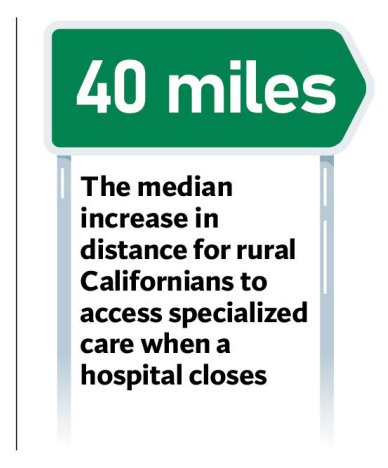California’s Rural Communities at Risk of Becoming Health Care Deserts
The Issue
Nearly 2 million people live in California’s rural communities, and the life-saving and life-changing hospital care they rely on is at risk of being lost. That means those living in rural communities are unable to enjoy the peace of mind that so many take for granted in knowing they have access to health care when they need it.
Their uncertainty stems from the fact that California’s 60-plus rural community hospitals — often the sole source of care for miles and miles — are facing their gravest challenge in decades: the percentage of rural hospitals that lose money every day caring for patients has increased from 40% to 56% just since 2019.

California’s 37 critical access hospitals — those that serve communities located at least 35 miles from another medical facility, and which are included among rural hospitals — have seen their operating margin drop by a frightening 8 percentage points from 2019 to 2023. They are losing more and more money every day to deliver care — nearly two-thirds are in the red — and the scant reserves to cover the shortfall are dwindling.
This is a national trend. Between January 2013 and February 2020, more than 100 rural hospitals have closed. Through 2023, that includes two in California — Corcoran District Hospital and Madera Community Hospital.
One-fifth of California’s rural hospitals stopped offering OB services between 2011 and 2021 and 40% of California’s rural hospitals stopped offering chemotherapy between 2014 and 2022.
When a rural hospital closes, those in poor health, seniors, and people experiencing poverty suffer the most (nationally, 13% of people living in an area affected by a closure are below the poverty line, compared to 9% overall). For Medicare beneficiaries, a closure means the median travel distance to access inpatient services increases by 20 miles; for specialized services, like treatment for substance use disorders, the median travel distance increases by almost 40 miles.
What’s Needed
Rural hospitals need immediate financial help, followed by a new financial model that preserves care. A new financing system that will cover the costs of providing care at rural and critical access hospitals will help ensure all Californians have access to the care they need and deserve.